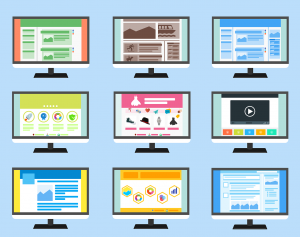How Can I Improve the User Journey on my Website?
A user journey, in terms of web design, is a series of steps a user may take on your website in order to reach a particular goal. User journeys are integral to the process of designing websites, as they help you understand the way users interact with your site. The goal is to make each step of this journey as easy and effective as possible, ensuring the user reaches each touchpoint quickly and can take the actions you want them to.
To improve the user journey on your website, you must first understand the features of your website that are leading the user to either leave or take further actions/convert.
You should identify the steps the users are taking on the site from the moment they arrive on a page to the minute they leave. From here, you can predict the actions they would take during each of these steps. This process will help you improve the steps of the user journey, make the signifiers across the site more obvious and easy to use, and convert your users into customers.
Identify the intentions of your user journey.
The steps taken before optimising your web design and ultimately improving the user journey are all about understanding your user or customer. With a core understanding of your user, you can predict the actions they will want to take when on your website, and make these readily available to them. One useful method for identifying your user’s intentions is to build a user persona.
Build a user persona to identify the intentions of the user journey.
Building a user or customer persona may seem like a long-winded process. The information is, in fact, very important; a user persona is there to identify the emotions, intentions and motivations of potential customers and, in turn, guide you to match these intentions on your website.
Consider adding these to your user persona:
Motivations: Why are your users really visiting your site? What would push them to move forward in the user journey? Identify if they want to buy something, read about something, call you, get information – the list goes on.
Lifestyle: Is your user often busy, a professional, browsing their phone on the train home from work? Or will they be likely to visit your site in the comfort of their own home on a Sunday afternoon? You might wonder why this matters, but it will impact how much patience they will have when taking actions on your website.
Emotions: How are they going to feel when browsing your site? Do they want to be educated, excited or reassured? Do they require a service or are they making an indulgent purchase? Mapping how your user will feel in each stage of the customer journey will help you understand how to evoke these emotions in your website design.
Touchpoints and Channels: Identify all the places where a user will interact with your business and the channels through which they will communicate with you. Each touchpoint will need to convey a coherent message and evoke positive reactions. A touchpoint may come before interacting with your website (e.g. reading a review or social media post), during the purchase/conversion process or even afterwards (e.g. your aftersales marketing techniques). These will need to be accurate to ensure that you will know what information to put where to retain the customer whilst they are on their journey.
Pain points: What annoying, unoptimised parts of your website would drive your user away? Are you not mobile-friendly? Is your content too confusing, long, or worse, boring? Is the website outdated or slow? Would they like your competitor’s site more? Once you figure out these pain points, you can fix them and remove the barriers to conversion for your user.
Once you have built your user persona, you can assess your website to see if it is successfully matching the intentions of its users. If it is not, or could be better, it is time to start mapping the user journey and get optimising.
Build a user journey map to identify opportunities for improvement.
Map out the stages of your intended user journey on your website. Move through the full process from first landing on a page, to visiting key touchpoints and ultimately converting to the end goal, whatever that may be. It can be useful to draw this out or write a narrative from the perspective of a user on your website.


It might be easier to think of your website as a roadmap and your user’s intention is to take a trip with as few hiccups as possible.
-
Setting off: The user has arrived at the starting point (your landing page(s)) – how clear is the direction of where they should go next? What content or design feature would make them want to continue their journey?
Sign-posting: You’ll lose customers if they could get lost on your site. Are there clear indicators (or touchpoints) throughout the road that reassure the user they are reaching their end goal and won’t force them to turn around and head in the other direction?
Potholes: If the journey isn’t smooth, your user isn’t going to want to move forward. Fix site speeds, clunky web design and add in a security certificate to keep them satisfied they’ve chosen the right path.
Service stations: There’s a chance your user’s vehicle might break down along the way. Make sure help is on hand in the form of FAQs, clear contact details, directions or even a chatbot to help them stay on track.
How can I start making these improvements to the user journey?
Your user journey map can be used to make improvements to each stage of the conversion process. Remember, if you wouldn’t use your site, why would anyone else?
Determine your end goal.
If you haven’t defined what you want the user to actually achieve at the end of their journey on your website, they certainly won’t be able to figure it out on their own. Set the intention, match it with your user’s, and design the website and its surrounding touchpoints entirely around this end goal.
Optimise your landing page.
This may very well be your homepage, or it could include other pages that you have noticed in your analytics garner a lot of traffic from search engines. Either way, treat these pages as top priority. Are they easy to use, attractive and have all the relevant CTAs? If not, make it so. By optimising your landing pages and their content, you’ll reduce that pesky bounce rate and have set your user off on the right foot.
Content and where to put it.
Images, text, video, blogs, they all matter. What matters more, though, is where they appear. In web design, you may have heard of ‘above and below the fold’. This is essentially the same concept as a traditional newspaper, where the headline news would be above the ‘fold’ of the paper. On a website, this part would be any content that appears on your page before the user scrolls. It is best practice to have your optimised content above the fold of your site. It’s unlikely your user will admire that massive image you put at the top of the page as much as you do if they have to scroll for miles to find their relevant information.
Remember those pain points from earlier? Fix them.


We all know what it’s like when you’re trying to use a website that’s designed so badly it’s physically painful to use. Don’t let that be your website. Take yourself through each stage of your user journey and ask yourself what would annoy you – then get it fixed! Another great tip is to use your analytics to identify what pages have the highest bounce rate. Visit these pages, and ask yourself what would make you click off if you were a user.
Web design: colours, formats and CTA design.
It doesn’t have to be the flashiest or most expensive website, but a bit of good design goes a long way. Certain colours, layouts and designs of your call to action buttons, for example, can increase the number of people who click them and convert. Despite all the code, web design is a very human-oriented process, and these simple touches can make a big difference to your website’s appeal.
Create multiple routes for your user journey.
It can be difficult to know the exact journey a user will take when visiting your website. They may detour from the route you expected. You can get ahead of the game with this by optimising multiple routes across your website that all lead to your end goal. This way, you reduce the risk of a user visiting a page that doesn’t lead them back to the desired journey.
What other features of the user journey can I improve?
The answer here is in the content. Search engine optimisation (SEO) enables your content to be considered authoritative by both users and search engines. If they can get all the information they need on your website, why do they need to look anywhere else?
This has now advanced further, all with the user journey and user experience in mind. For example, you may have noticed that Google has a clearer understanding of what you are looking for when you type in (or voice search) a question. You may have even been offered an excerpt of concise information from a website at the top of your SERP (search engine results page), otherwise known as a featured snippet. These featured snippets represent a website that has optimised the user journey, as they show a search engine’s confidence in the content available on your website and show your content answers the question directly.
Google will even show different results depending on how a search is worded – so it’s absolutely essential that your content matches your user’s intent. Effective content marketing and SEO ensures that your entire website does exactly that, by answering any questions that are frequently asked on topics related to your business. This improves your perceived level of authority and makes it far more likely that you’ll show up.
These methods can also be put in place on your other touchpoints and channels, such as your social media platforms or email newsletters. If they are all optimised to match the user intent, then the overall journey will be improved no matter where they started it from.
Improving your website’s user journey is an ongoing process.
The best way to always maintain and improve your user journey and experience is through consistent testing and retesting of your site and making the relevant content updates. Hopefully, this blog has provided you with more insight into understanding the way your users interact with your website, and how you can design your site to match their intentions and motivations. If it seems like a lot of work, it’s because, to do it effectively, it is.
At Active Internet Marketing, we understand how to design digital marketing strategies that work. We can provide your business with responsive web design, successful SEO strategy and effective CRO and marketing campaigns that will deliver an optimised user journey/experience. The difference is, we make it as human as possible, using the latest methods with the user in mind.
